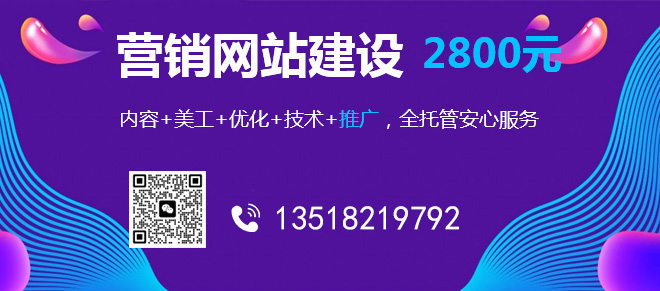iBATISDAO事务浅析
iBATIS DAO事务的理解要从iBATIS DAO 框架开始,它提供了事务管理模块。而这个事务管理可以应用到很多场合,包括JDBC、Hibernate、JTA、SQLMAP等。

创新互联专注于企业营销型网站、网站重做改版、会宁网站定制设计、自适应品牌网站建设、H5响应式网站、成都做商城网站、集团公司官网建设、成都外贸网站建设公司、高端网站制作、响应式网页设计等建站业务,价格优惠性价比高,为会宁等各大城市提供网站开发制作服务。
下面以最简单的JDBC来分析一下其如何实现iBATIS DAO事务管理。
首先来看一段代码:
- public class OrderService {
- private DaoManager daoManager;
- private OrderDao orderDao;
- public OrderService() {
- daoManager = DaoConfig.getDaoManager();
- orderDao = (OrderDao) daoManager.getDao(OrderDao.class);
- }
- public void method() {
- try {
- //a separate transaction
- orderDao.method1(); //***个事务
- daoManager.startTransaction(); //开始第二个事务
- orderDao.method1();
- orderDao.method2();
- daoManager.commitTransaction();//提交第二个事务
- } finally {
- daoManager.endTransaction();
- }
- }
- }
在method()方法里有着两个事务,如果在方法里不显式的调用daoManager.startTransaction(),则每个DAO的一次方法调用就是一个独立的事务。
iBATIS DAO事务,有两个核心接口DaoTransactionManager和DaoTransaction
对应着不同的数据库持久层实现,两个接口分别对应着不同实现
查看iBATIS 代码,可以发现这些manager实现事务,就是调用事务源的事务操作方法
- JdbcDaoTransactionManager
- public void commitTransaction(DaoTransaction trans) {
- ((JdbcDaoTransaction) trans).commit();
- }
- JdbcDaoTransaction
- public JdbcDaoTransaction(DataSource dataSource) {
- try {
- connection = dataSource.getConnection();
- if (connection == null) {
- throw new DaoException("Could not start transaction.Cause: The DataSource returned a null connection.");
- }
- if (connection.getAutoCommit()) {
- connection.setAutoCommit(false);
- }
- if (connectionLog.isDebugEnabled()) {
- connection = ConnectionLogProxy.newInstance(connection);
- }
- } catch (SQLException e) {
- throw new DaoException("Error starting JDBC transaction.Cause: " + e);
- }
- }
- public void commit() {
- try {
- try {
- connection.commit();
- } finally {
- connection.close();
- }
- } catch (SQLException e) {
- throw new DaoException("Error committing JDBC transaction.Cause: " + e);
- }
- }
那么DaoTransactionManager以什么依据处理事务呢?DaoTransactionState看看DaoTransactionState的代码,非常简单,四个常量来表示事务处于的不同的状态
public static final DaoTransactionState ACTIVE = new DaoTransactionState();
public static final DaoTransactionState INACTIVE = new DaoTransactionState();
public static final DaoTransactionState COMMITTED = new DaoTransactionState();
public static final DaoTransactionState ROLLEDBACK = new DaoTransactionState();
那么实际程序中是如何控制事务的呢
在***段代码中,我们是这样取得DAO
orderDao = (OrderDao) daoManager.getDao(OrderDao.class);
实际daoManager返回的并不是orderDao的具体实现类,它返回的DaoProxy
DaoProxy
- public Object invoke(Object proxy, Method method, Object[] args)
- throws Throwable {
- Object result = null;
- if (PASSTHROUGH_METHODS.contains(method.getName())) {
- try {
- result = method.invoke(daoImpl.getDaoInstance(), args);
- } catch (Throwable t) {
- throw ClassInfo.unwrapThrowable(t);
- }
- } else {
- StandardDaoManager daoManager = daoImpl.getDaoManager();
- DaoContext context = daoImpl.getDaoContext();
- if (daoManager.isExplicitTransaction()) {
- // Just start the transaction (explicit)
- try {
- context.startTransaction();
- result = method.invoke(daoImpl.getDaoInstance(), args);
- } catch (Throwable t) {
- throw ClassInfo.unwrapThrowable(t);
- }
- } else {
- // Start, commit and end the transaction (autocommit)
- try {
- context.startTransaction();
- result = method.invoke(daoImpl.getDaoInstance(), args);
- context.commitTransaction();
- } catch (Throwable t) {
- throw ClassInfo.unwrapThrowable(t);
- } finally {
- context.endTransaction();
- }
- }
- }
- return result;
- }
看到这段代码就非常清楚了,每调用DAO的一次方法时,如果不显式的调用daoManager.startTransaction(),就会成为单独的一个iBATIS DAO事务。再看看iBATIS为我们提供的摸板JdbcDaoTemplate
- protected Connection getConnection() {
- DaoTransaction trans = daoManager.getTransaction(this);
- if (!(trans instanceof ConnectionDaoTransaction)) {
- throw new DaoException("The DAO manager of type " + daoManager.getClass().getName() +
- " cannot supply a JDBC Connection for this template, and is therefore not" +
- "supported by JdbcDaoTemplate.");
- }
- return ((ConnectionDaoTransaction) trans).getConnection();
- }
iBATIS控制多个DAO的事务实际是让这些DAO共用了一个DaoTransaction(ThreadLocal),一个Connection
这里是一个事务源的情况,如果多个事务源之间要完成全局事务,还是老老实实用分布式事务管理服务吧(jta)。
iBATIS DAO事务的相关信息就向你介绍到这里,之后的文章里我们还会提及的,请关注。
名称栏目:iBATISDAO事务浅析
文章出自:http://www.shufengxianlan.com/qtweb/news6/288006.html
网站建设、网络推广公司-创新互联,是专注品牌与效果的网站制作,网络营销seo公司;服务项目有等
声明:本网站发布的内容(图片、视频和文字)以用户投稿、用户转载内容为主,如果涉及侵权请尽快告知,我们将会在第一时间删除。文章观点不代表本网站立场,如需处理请联系客服。电话:028-86922220;邮箱:631063699@qq.com。内容未经允许不得转载,或转载时需注明来源: 创新互联
- 第七空间办公系统如何设置虚拟目录?(服务器虚拟目录空间)
- Linux内核SMP技术革命:开启多核新时代(linux内核smp)
- 如何顺利完成域名变更数据库?(域名变更数据库)
- Web应用程序开发演变史
- 如何有效避免工作疲劳和情绪低落的困扰?
- 360邮箱密码忘记了怎么找回-360邮箱密码更改方法介绍
- ORACLEEXP不能导出空表的原因分析及解决方法
- 快速寻找Mac地址:Linux命令解析(linux命令查mac地址)
- 实用技巧:如何用几个简单的命令改善你的Linux安全
- Python代码便利并行,这个操作秀啊!
- 创新互联Python教程:Python如何使用Excel文件
- ping网络怎么操作?(开启服务器ping的指令)
- dns服务器地址要不要钱?域名服务器收费吗
- 群晖比较好用的媒体服务器有哪些?
- 租用双线vps主机要注意什么问题呢